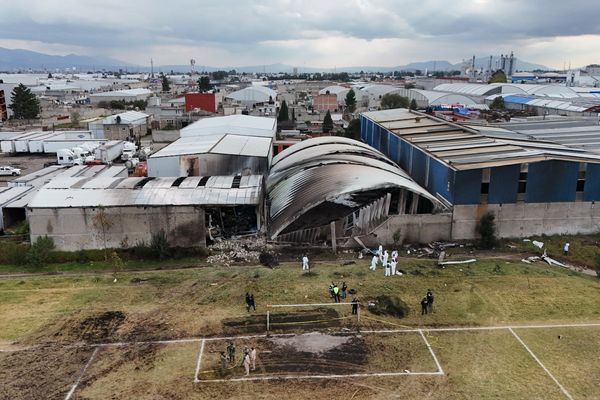
Facing the Calamity: A Step Through Hurts & Hardships and Looking Beyond for Generations to Come is the autobiography and witness testimony of Fred Him-San Chin (陳欽生), a Taiwanese of Chinese descent born in Malaysia, who was wrongfully imprisoned in Taiwan for twelve years from 1971 to 1983.
Chin came to Taiwan in 1967 to study at National Chung Kung University in Tainan. On March 3, 1971, Chin was brought to Taipei by Kuomintang (KMT) secret police, where he was imprisoned and tortured. He was forced to confess to a bombing that had taken place in the United States Information Service library several months earlier, where Chin spent much time studying.
Even after the case had been closed without proving any involvement of Chin, the KMT agents would not let him go, afraid they would lose either face or the bounty for capturing political criminals. Instead, Chin was sentenced to death, but due to international pressure his sentence was commuted to twelve years in prison.
Thus began Chin’s life of imprisonment, spending two years in the Jingmei Detention Center, followed by eight years in Oasis Villa on Green Island, and a final two years in the Ren Ai Education and Training Center.
After a rough first few years spent in isolation and self-neglect, Chin managed to pick himself up with the help of senior political prisoners. He worked and learned the skills necessary to survive, until his sentence finally came to an end in 1983 and Chin was cast out to the streets.
While the book does not go into the details of how the KMT used the nationality laws of the Republic of China (ROC) to oppress so-called “overseas Chinese” like Chin — laws that continue to cause controversy — it does show with full clarity the effect of these laws: released from prison but without passport or identification card and denied deportation back to Malaysia, Chin began a “nationless, jobless and homeless” life.

As a former political prisoner, the KMT continued to harass Chin, making life more difficult as employers often let him go upon finding out about his past. Chin fortunes began to turn, however, when he acquired an ROC Identification Card in 1985.
Even then Chin did not immediately return to Malaysia, not making his first trip home until 1988. He spent several months there, but finally realized his country of birth had changed beyond recognition. Moreover, as fate would have it, he developed feelings for the Taiwanese woman he had asked to accompany him, marrying shortly after returning to Taiwan and starting a family.
Having promised his wife not to have anything to do with other political victims, Chin spent the 1990s and 2000s focusing on work, showing talent in international trade and becoming a globetrotter. It wasn’t until 2009 that Chin was contacted to convey his account of persecution.
While this initially reopened old wounds, telling his life’s story eventually served as a form of trauma therapy. Since then, Chin has been active as a witness working towards the realization of transitional justice in Taiwan.
Owing to his experience working internationally, Chin has often shown foreign audiences around, and it was due to repeated entreaties from his audience that motivated Chin to write this English autobiography.
Chin’s story and personality are compelling enough to overshadow the blemishes in their presentation. It would have benefited, however, from more thorough editing to clean up some stylistic and factual inconsistencies. For example, some years are incorrectly converted from the ROC calendar to the Gregorian calendar, and the White Terror period is alternately referred to as running from 1949 to either 1987 or 1992.

The year 1987 refers to the lifting of martial law. 1992, on the other hand, was when Article 100 of the Criminal Code was amended to a narrower, explicit forbidding of the intention to use violence or threats to carry out sedition, instead of forbidding the mere intention to do so. The distinction is significant, as the 1992 decriminalization of seditious thoughts opened the way for Taiwan’s culture of free speech.
Another area where the editing could have been more rigorous is the spelling of names. For instance, the person who was instrumental in getting Chin to come forward as a witness, is referred to as either Tsao Chin-ron or Chao Chin-jon; searching for either of these names returns no relevant results. The person in question is Tsao Chin-Jung (曹欽榮), who has publications in Mandarin and English on White Terror heritage sites and victim testimonies.
More careful editing would have made it easier to reference this work with other writing on the White Terror. Since Chin’s autobiography was published by the National Human Rights Museum, and considering the National Human Rights Museum currently also hosts a database of Historical Sites of Injustice, it would have been preferable to see more consistency across these different media (Disclosure: The author helped proofread the English translation of the website.) As this book is hopefully the first of a series of English-language publications on this topic, improving the editing will help to ensure a broader audience.
Nevertheless, Facing the Calamity is an important contribution to English-language writing on this dark period of Taiwan’s history.
Reading Fred Him-San Chin’s account, there are two feelings that both capture the essence of the author’s character and tell more about Taiwan’s history in general. The first is incomprehension over his imprisonment and inhumane treatment, and with it a fervent desire to learn why he had been targeted.
The fulfillment of this wish, of course, is out of reach so long as the perpetrators do not come forward, nor is forgiveness possible until then. Chin, then, understandably states:
“If they asked for forgiveness sincerely before me, yes, I will surely forgive them. Unfortunately, until today there is not even a single persecutor brave enough to appear before us.”
Considering the KMT’s continued obstructing of transitional justice efforts, even going so far as to make the ridiculous claim of being the victim of a DPP-led “Green Terror,” one cannot help but feel indignation when reading the accounts of victims of the White Terror.
The second feeling that stands out in the book is Chin’s pride in being Taiwanese despite the hardships of having been falsely imprisoned. Or, perhaps, it would be better to say that it is because of what he has gone through, that he is proud to call himself Taiwanese.
Because if there is one thing that Taiwanese people — regardless of when or how they came to Taiwan — can be proud of, it is the forging of an identity in the face of oppression.
Facing the Calamity: A Step Through Hurts & Hardships and Looking Beyond for Generations to Come
by Fred Him-San Chin
National Human Rights Museum, 250 pp., December 2020.
READ NEXT: The Forgotten Victims of the White Terror
TNL Editor: Nicholas Haggerty (@thenewslensintl)
If you enjoyed this article and want to receive more story updates in your news feed, please be sure to follow our Facebook.







